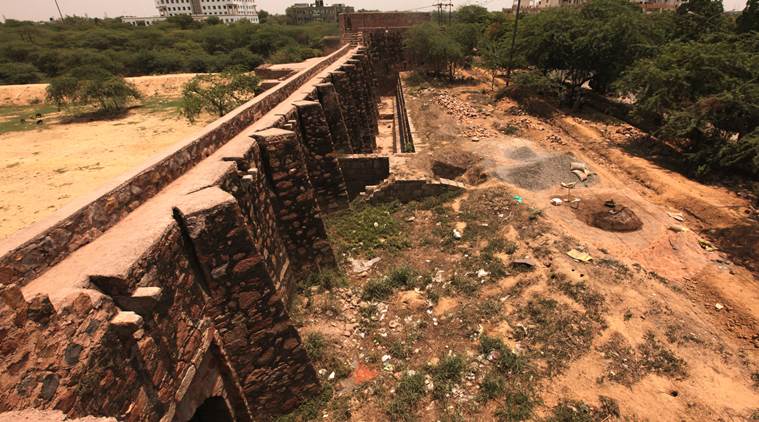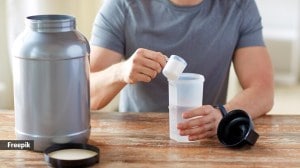- India
- International
Delhi: Dried up lake near Saket could see revival as Jal Board gets go-ahead
The project has been labelled one of the most difficult revival initiatives by the DJB due to a host of factors, including limitations to construct around an archaeological site and green belt area.
 The Satpula, or the seven-arched bridge, located near Khirki Masjid, was reportedly constructed around the mid-1300s and acted as a dam or a weir. (Express photo: Amit Mehra)
The Satpula, or the seven-arched bridge, located near Khirki Masjid, was reportedly constructed around the mid-1300s and acted as a dam or a weir. (Express photo: Amit Mehra)
A dried-up Satpula lake in the heart of South Delhi’s Khirki village could get a new lease of life, with the Delhi Jal Board (DJB) being given a no-objection certificate by the capital’s development authority to revive it.
The project has been labelled one of the most difficult revival initiatives by the DJB due to a host of factors, including limitations to construct around an archaeological site and green belt area.
The Satpula, or the seven-arched bridge, located near Khirki Masjid, was reportedly constructed around the mid-1300s and acted as a dam or a weir. The monument, next to the lake, falls under the Archaeological Survey of India.
An official of the Delhi Development Authority, which owns and controls the land, said a no-objection certificate was issued to the water board around a month ago.
A Jal Board official added, “The whole purpose of rejuvenation is recharging groundwater. At present, there is a gap of about 150 to 190 MGD (million gallons per day) of groundwater in Delhi.”

More than 1,000 kilolitres of water per day (KLD) will be pumped out from a drain running adjacent to the location to fill a depth of about 2 metres of the lake.
The DJB estimates 15% of this water would percolate into the ground.
An official said the water in the drain already passes through a sewage treatment plant (STP) 4 km before the lake, but a number of unauthorised colonies in that stretch had been emptying their waste in the drain.
Currently, the quality of water is quite poor, with a biochemical oxygen demand (BOD) range of 180-200 mg/l, and total suspended solids (TSS) range of 200-300 mg/l.
As per Ministry of Environment and Forests’ Environment (Protection) Rules 1986, the general standard for discharge of environmental pollutants in inland surface waters are BOD 30mg/l and suspended solids 100mg/l. CPCB’s water quality criteria states that the level of BOD in a drinking water source without conventional treatment, but after disinfection, should be 2mg/l or less. BOD is a measure of organic pollution in a water body.
In case of waste water or sewage, more organic matter means higher BOD, as a result of which there is lower amount of dissolved oxygen in the water. TSS includes materials such as silt, industrial waste and sewage.
Officials said the water entering the lake would be treated further with a hybrid STP that is eco-friendly and will remove all solid material, fine particles and purify it with a tertiary-level treatment such as a carbon filter.
The DJB is currently waiting to receive a map demarcating the lake area, and will issue tenders for the project in around 10 days. The entire project will take around eight months to complete. The Jal Board is also considering rejuvenating 17 other lakes in the capital, including the Hauz Khas lake, which are owned and controlled by the DDA.
This is in addition to 259 water bodies being rejuvenated by the DJB and the state Irrigation & Flood Control Department.
Apr 25: Latest News
- 01
- 02
- 03
- 04
- 05







































